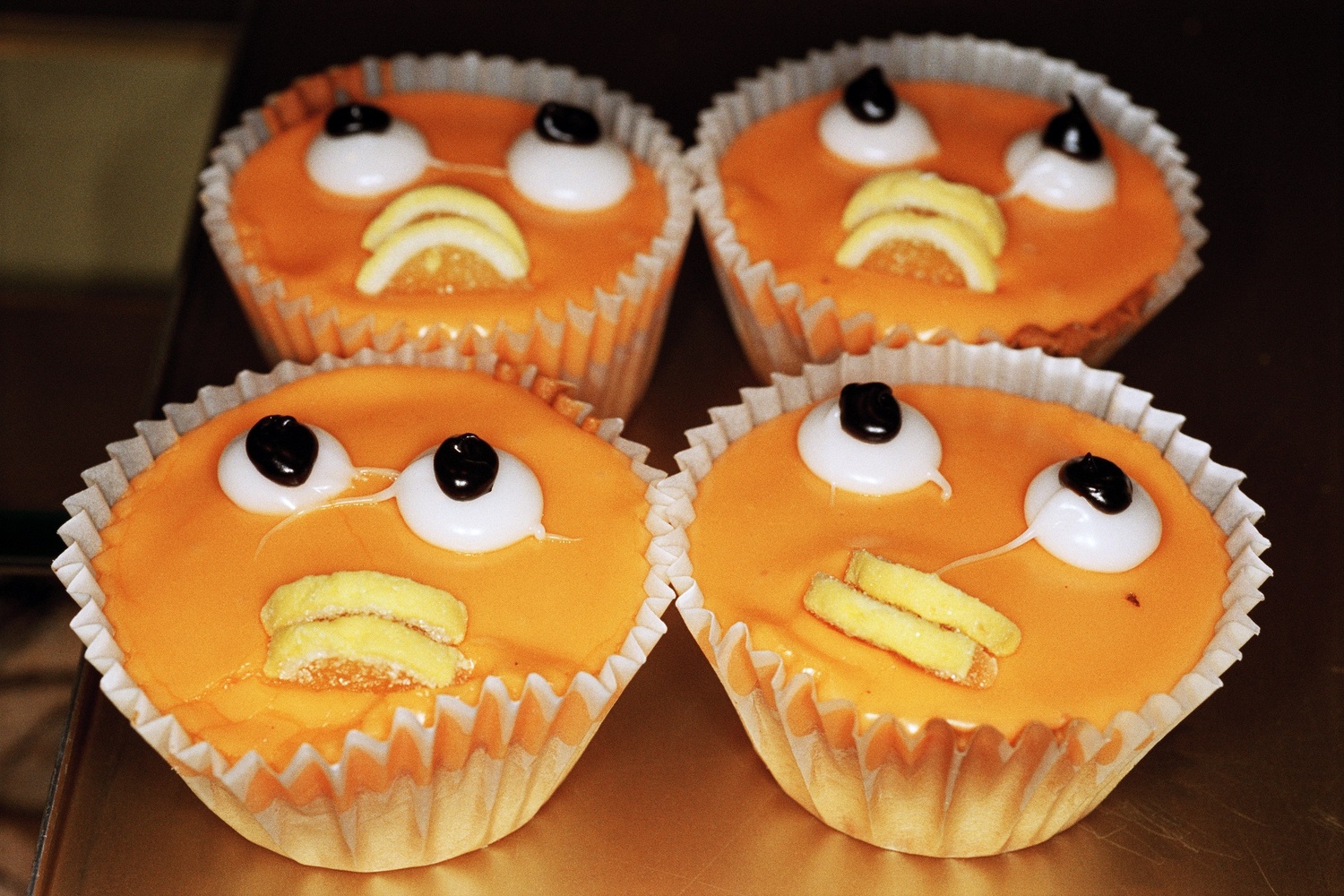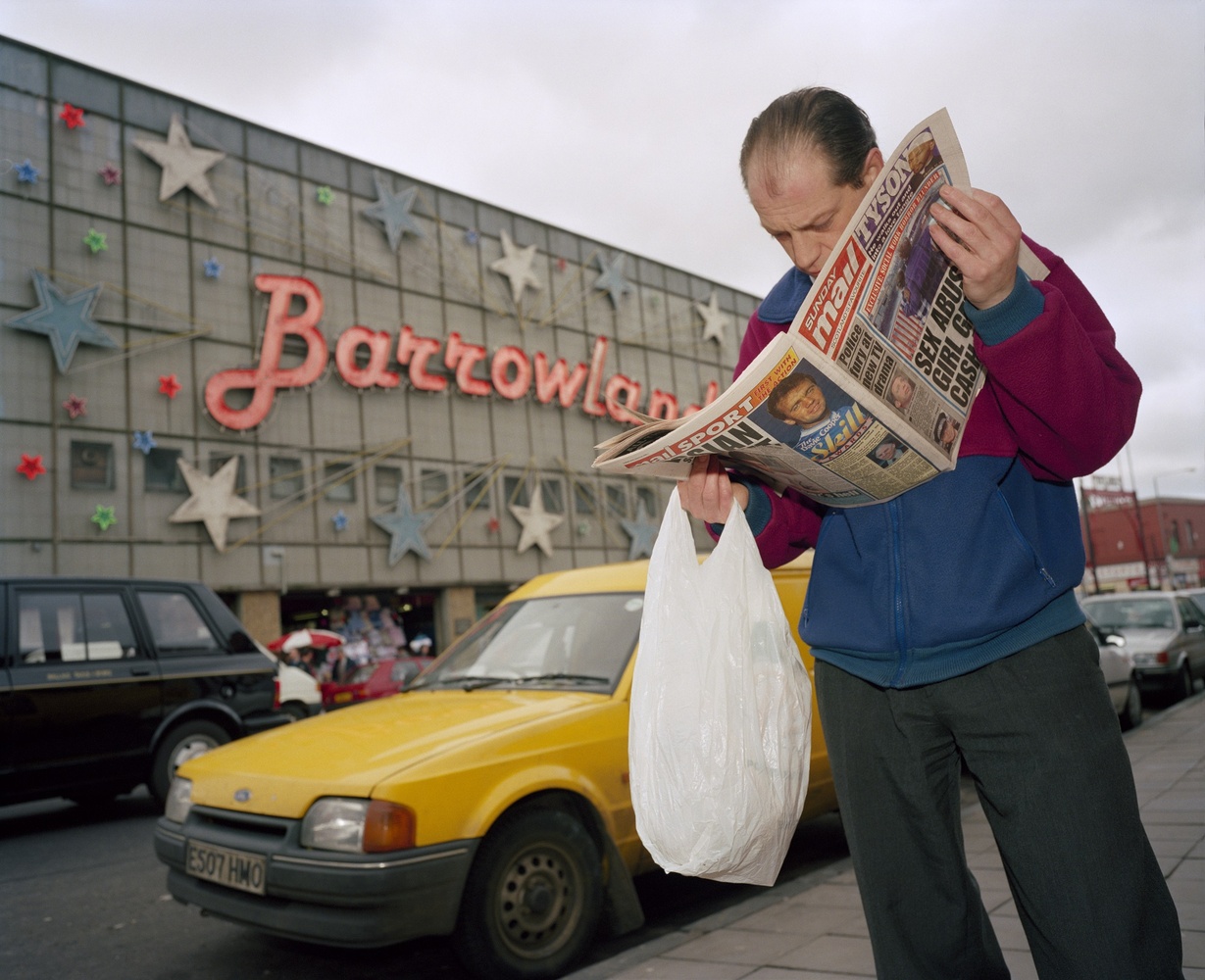Visitors are urged to share their reactions to images showcasing English documentary photographer Martin Parr’s view of Scottish life and Scottish stereotypes in a new exhibition taking place this summer.
Martin Parr will be displaying his satirical view of Scotland in an exhibition at the grand Pollok House on the south side of Glasgow in Scotland. The exhibition features a selection of works from Parr’s exhibition, Think of Scotland, which was originated by Aberdeen Art Gallery and shown as part the reopening gallery program in 2019 following a £30m redevelopment. Martin Parr, originally from Surrey, is best known for his books of photography, most notably, The Last Resort, a depiction of people and life at the seaside in New Brighton during the 1980s.
When I heard of this exhibition style, I was keen to find out what local visitors thought about their depiction through Parr’s images. Participatory art is designed to actively engage and involve audiences, encouraging interaction with a body of work. This is something which I am very much interested in within my own practice as a photographer, as collaborating with communities can help to break down barriers, promote dialogue, and widen perspectives. The ultimate goal is to foster a deeper connection between the audience and the artists' work. Participatory practice is not commonplace in major photography exhibitions. In most cases, some viewers might leave their thoughts through a line of text in a visitors book. However, in this particular exhibition, they are actively encouraged to provide individual comments on every single image on display.

Visitors to the exhibition are asked to contribute their voice by leaving comments about the images on display. The labels for each photograph have been designed as a notebook, and visitors are encouraged to contribute by writing their reactions to the images spanning a period from the 1990s to the 2010s that explore leisure activities and national Scottish stereotypes.
Printed on the front of each notebook, along with the image title, are sample comments to prompt viewers with their own writing. I wondered how much this influenced the thoughts of each person who opened the notebook to leave their own comments, as the prompts were overwhelmingly positive. When reading the names cited in each prompt, I learned that they were left by staff members from the Trust, with a prompt label even written by Susie Parr, Martin’s wife. I can't help but think that a notebook with just the image title on the outside with an invitation to leave thoughts inside would have been a more impartial way to seek responses.
Upon looking through the notebooks, I found that many of the responses are indeed positive. There are many who have used the notebooks to leave general comments on the exhibition as a whole and others who have left positive comments about how beautiful Pollok House is. For those who have commented so far on individual images, there were a mix of feelings, such as one commenter who found the images: “All very interesting, but I wonder how the people in the photographs feel about their portrayal.” Depicting any social group, including the working class, in a way that perpetuates stereotypes or diminishes their dignity is potentially harmful or disrespectful, even if this is intended to be satirical.
In true Glaswegian humor, one commenter simply wrote “Taps aff” in response to the Burntisland image, a common response translating to tops off, to the fact that Scottish people have a more flexible description of weather conditions we consider to be hot. One viewer commented that this image was “Very much an accurate representation” of Scottish people. Another viewer commented “Burnt’ Island indeed,” a notion of true Scottish humor.

Some pressing inquiries came in response to the cupcakes image. “Why are the cupcakes sad,” one viewer wanted to know, while another asked, “Why is this in a gallery,” seemingly in response to their analysis of the quality of the close-up image shot with direct flash.
A firm favorite image of the exhibition seemed to be the Barrowlands image, which one viewer stated: “Shows Glaswegian life and what Glasgow is all about. Composition is excellent too,” while another commented: “I think this could be staged! You don’t stop in the middle of the street to read a newspaper!” Perhaps this viewer believes that this image does not conform to their understanding of documentary photography.

Further contributions will be made by local community groups, who have been as part of a community outreach program being trialed by the team at Pollok House. I will make a point of revisiting towards the end of the exhibition run to read through the labels again to gather the thoughts of a higher number of visitors.
Context matters for the location of exhibited artwork, and Pollok House presents an intriguing choice for participatory art. As one of Scotland's grandest Edwardian homes, now managed by the National Trust for Scotland, it holds historical significance as the ancestral residence of the Maxwell family. Pollok House showcases renowned art by El Greco and Blake, complemented by opulent Edwardian furniture. It is situated in Pollok Country Park, a beautifully maintained 146-hectare greenspace south of Glasgow City Centre, and former winner of Best Park in Europe.
Stuart Mackinnon, National Trust for Scotland Operations Manager for Pollok House, said of the exhibition: “The labels aim to encourage participation and to engage with a diverse range of people to widen access and interest in art by asking visitors to explore their own reactions and share their thoughts and reflections about the images on display.”
In my view, widening participation and diversifying audiences cannot be achieved in a meaningful way while charging admission to interact with the work on display. This exhibition can only be viewed by paying to enter Pollok House, which has a standard entry cost of £8.50 per person or £6 on a concessionary rate. That acts as a barrier, which limits access for those who cannot afford the entry fee, especially at a time where people across the nation are tightening their spending due to the cost of living crisis. I couldn’t help but make a connection between this fact and the working class people depicted in the images. Can you encourage widened participation and charge an entry fee? Whatever the case, choosing a gallery space that requires an entry fee feels antagonistic when considered alongside the satirical content of Parr’s work. Perhaps that was intentional. To help make this a true, widened access participatory experience, this article gives further space for anyone with an internet connection to comment.
The Martin Parr: Think of Scotland exhibition will show at Pollok House until Sunday August 27, 2023 and be available for viewing from Thursday to Monday each week.
Lead Image: GB. Scotland. Glasgow. Eating place in Paddy's Market. 1999. Martin Parr. All article images courtesy of Magnum Photography.







Great article and a fascinating read, thank you. I must catch the train to Glasgow to see it.
I would recommend a visit to The Glasgow Gallery of Photography too when you're up. It's a relatively new gallery in Merchant City, only 5-10 minutes walk from Street Level Photoworks.
Thank you, David. I shall go there.
That's a great little gallery, I agree. And yes, there are a few under-the-radar photo exhibitions this month in Glasgow. Check out SaltSpace for my own street photography from 21-27 June, with opening reception 21 June from 6 to 8pm All free and I won't have a notebook for comments but will take them 'live'.
Hi Marianne, thanks for the heads up, I'll try and make it along!
Thank you Ivor, there are plenty of excellent exhibitions on in Glasgow at the moment too as David says - Margaret Mitchell's An Ordinary Eden at Streetlevel is well worth a look.
Fabulous. Thank you.
I didn't even know this was on, thanks. That's an afternoon out planned for this summer.
Fantastic, remember to leave some comments in the notebooks
Maybe its just me getting old and grumpy, or maybe I have lived outside the UK for too long. Back in the day when he published his "Last Resort", I enjoyed his work.
But I cannot help feeling lately, that what we often see in his pictures, including the ones in this article is just an aspect of Britain's caste system. Parr, an educated middle class Brit, part of the Guardian reading cultural elite, is just sneering as the British middle classes love to do, at those horrible working class oiks, or if you prefer "Gammon", with their bad taste and bad habits.
That's an interesting point of view, Nigel, and one that was applied by some when Last Resort was published. However, when you see him working, which, admittedly, is something I have only done through a TV documentary, he comes across as having compassion for and connectivity with his subjects.
As a working-class oik, as you put it, I actually find it hard to shoot observational images of the fishing/ former coal mining town where I live. The reason being it is commonplace for me. Lots of photographers find it easier to photograph away from their own patches. Someone from the outside can see this community with fresh eyes.
So, I don't see Martin Parr's work as sneering at all. But, if we do apply that attitude towards it, does that then suggest that nobody should be able to photograph anything other than the social class to which they belong? Would it be wrong for me to photograph people in suits, or the cultures of the other countries where I have lived?
It's a fascinating topic.
Valid observations Nigel, it would be interesting to consider whether Parr's work has changed or perhaps your perspective has? The choice of venue and entry fee to see this exhibition when viewed in context of the content of the work didn't sit well with me.
I think my perspective has changed, for several reasons. I have lived in Italy for many years, far away from the suffocating British class system, which I find is still very real, when I visit the UK. Also I suppose as you go through life, perspectives change.
I have never come across in Italy, any work of this type where the habits of ordinary people are put under a sarcastically critical magnifying glass, for the pleasure of the gallery visiting sophisticates.
It is the first picture in the article, that leaves me with a bad taste in the mouth, it screams of a educated, culturally sophisticated photographer sneering at this inelegant badly dressed group of people, with a bit of fat shaming thrown in.
Parr is much more interesting when he takes a look at the rich.
I agree. Parr's images for Gucci's eyewear campaign were fantastic.